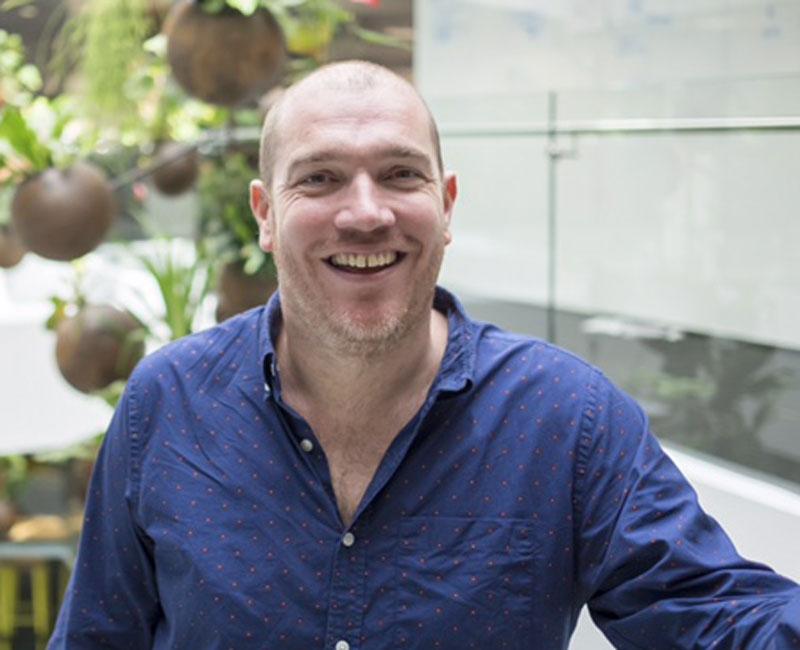
Atlassian is the poster child for Aussie startups — and with good reason. The company was the country's first unicorn, and it’s now bigger than Qantas, valued at over $US10 billion.
That sort of success doesn’t happen by accident, and the management team of Atlassian have put a lot into getting the most out of their teams, through making sure they run smoothly and are legitimately diverse. (They released their “Playbook” last year with some of the strategies they’ve used — it’s definitely worth checking out).
Dom Price has worked at Atlassian for the last four and a bit years, and he’s currently Head of R&D and Work Futurist. He’s helped shape how the company works, and sat down with UTS graduate Catherine McElhone to share some tips on making diversity a reality.
CATHERINE: How did you end up working at Atlassian?
DOM: I’d been looking at Atlassian for a long time as a company and brand I admired, and finally joined them four and a half years ago. I started as Head of Program Management, when Atlassian was a small organisation but going through epic growth.
One day my boss said, “Dom, I need you to go and create how we will work in the future, and that will be different from the way we work now. Can you go and work that out?” So my job now as a futurist is focused on understanding how the world is changing, and how we go about unleashing the potential of our teams.
CATHERINE: How have you created a healthy environment?
DOM: We’ve done a whole lot of training around unconscious bias, and we have talks from internal and external speakers about diversity and inclusion. And also exclusion — sharing stories about what goes wrong is sometimes as powerful as the stories about what goes well.
We’re honest when we do our diversity reporting, which is one of the things we changed up a couple of years ago — we don’t just report diversity at an organisational level. So what a lot of organisations were doing was saying, “40% of our workforce is female, so we’re diverse.” And then you look at it and all the females are in marketing and HR and all the men are in engineering, so you’re not actually diverse. So now we report diversity at a team level.
Lastly, we have a good tone from the top — our senior leaders and founders are very passionate about diversity. So when you get senior leaders making it part of their normal conversation, it’s easier for others to follow.
CATHERINE: How is diversity a reality at Atlassian?
DOM: There are two levels of diversity we focus on the most. One is cognitive diversity, which is difference of background and experience. I care less about your religion or gender or whatever. If I can get non-like-minded people together — the respectful dissent and the friction that comes from that can be extremely valuable.
The second is creating an environment that’s inclusive, where everyone feels like they can bring their best selves to work everyday. We’re not perfect at it. And we are constantly experimenting with how we do that. But diversity and inclusion go hand in hand. We can hire from a diverse pool and hire diverse people but if our environment only supports one type of person those diverse people quickly walk out the door.
CATHERINE: And what role does education play in all this?
DOM: I was having a discussion with people from the Department of Education recently, and I said part of the danger of our system is we perpetuate grades and marks being the measure of success, and not impact or capability or practice or curiosity — all these “soft” skills.
So how do we get people to become great scientists and get the hard skills, but also get a chance to practice and be vulnerable and get the soft skills? Wouldn’t it be great if kids played more team sports or in orchestras and learnt compromise, and learnt having to support each other and learnt about loss? I can’t hire really high EQ people who have no skills, nor can I hire great engineers who are complete a**holes. I want the combination and I’m happy to be selfish and maintain that I need the combination.
CATHERINE: Is there an industry buzzword you feel is overused — and why?
DOM: There is a long list. ‘Innovation’, ‘cross conceptualisation’, ‘synergy’… the one that makes me cry and genuinely kills my mojo is ‘transformation’. So every large company is going through cultural transformation, digital transformation, agile transformation, some form of transformation. Which I think is a really dishonest way of saying, you’ve delivered a really sh*t strategy and you’ve only just realised that all your competitors are better than you. And so you go and pay some external company to transform you.
I hate ‘transformation’ because it suggests that change is finite, and I think its infinite. So for me transformation is the one that is regularly overused as a way of senior leaders spending millions of dollars with external consultants.
Visit entrepreneurship.uts.edu.au and sign up to our Innovation and Entrepreneurship newsletter to discover more entrepreneurial opportunities at UTS.

